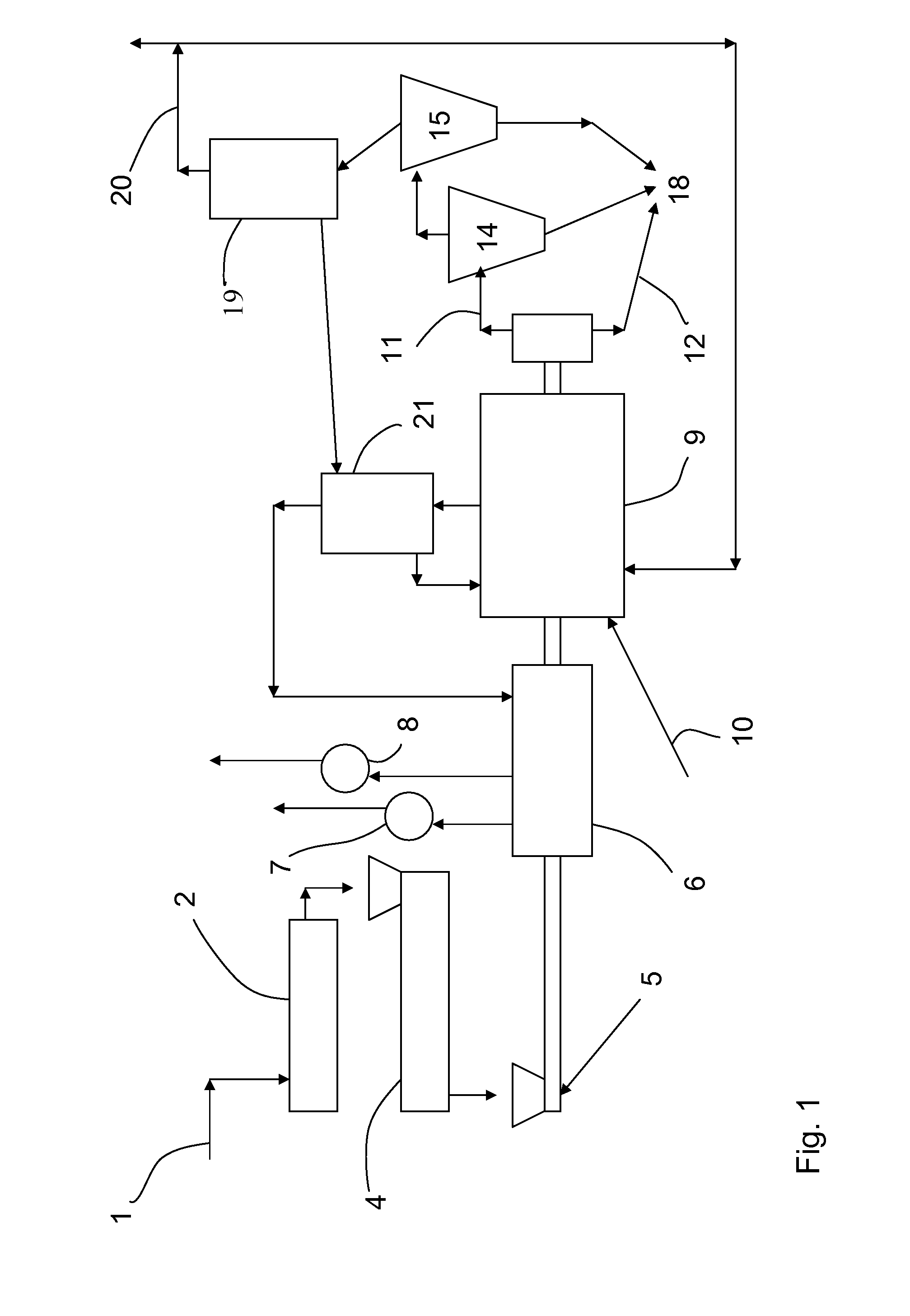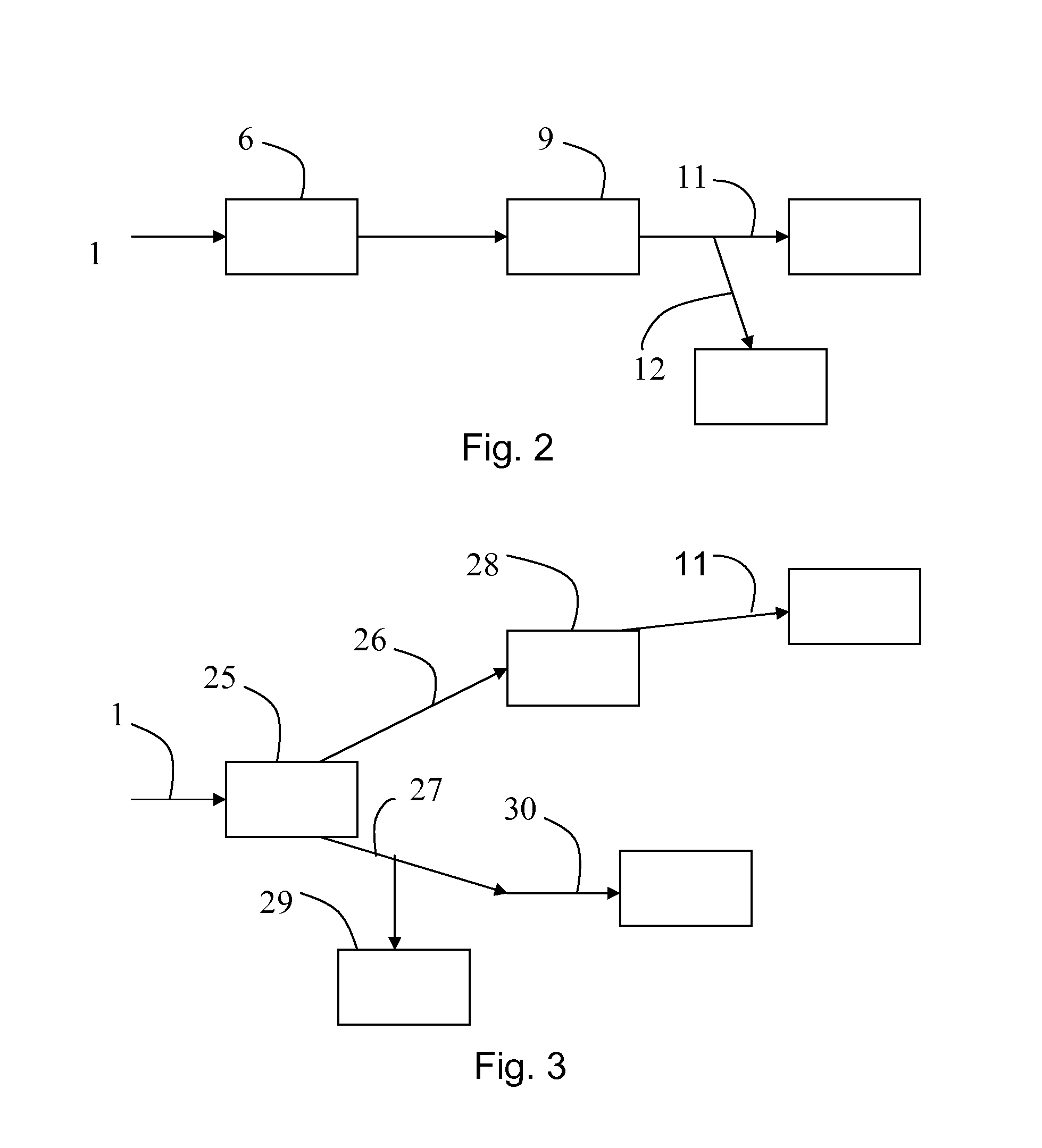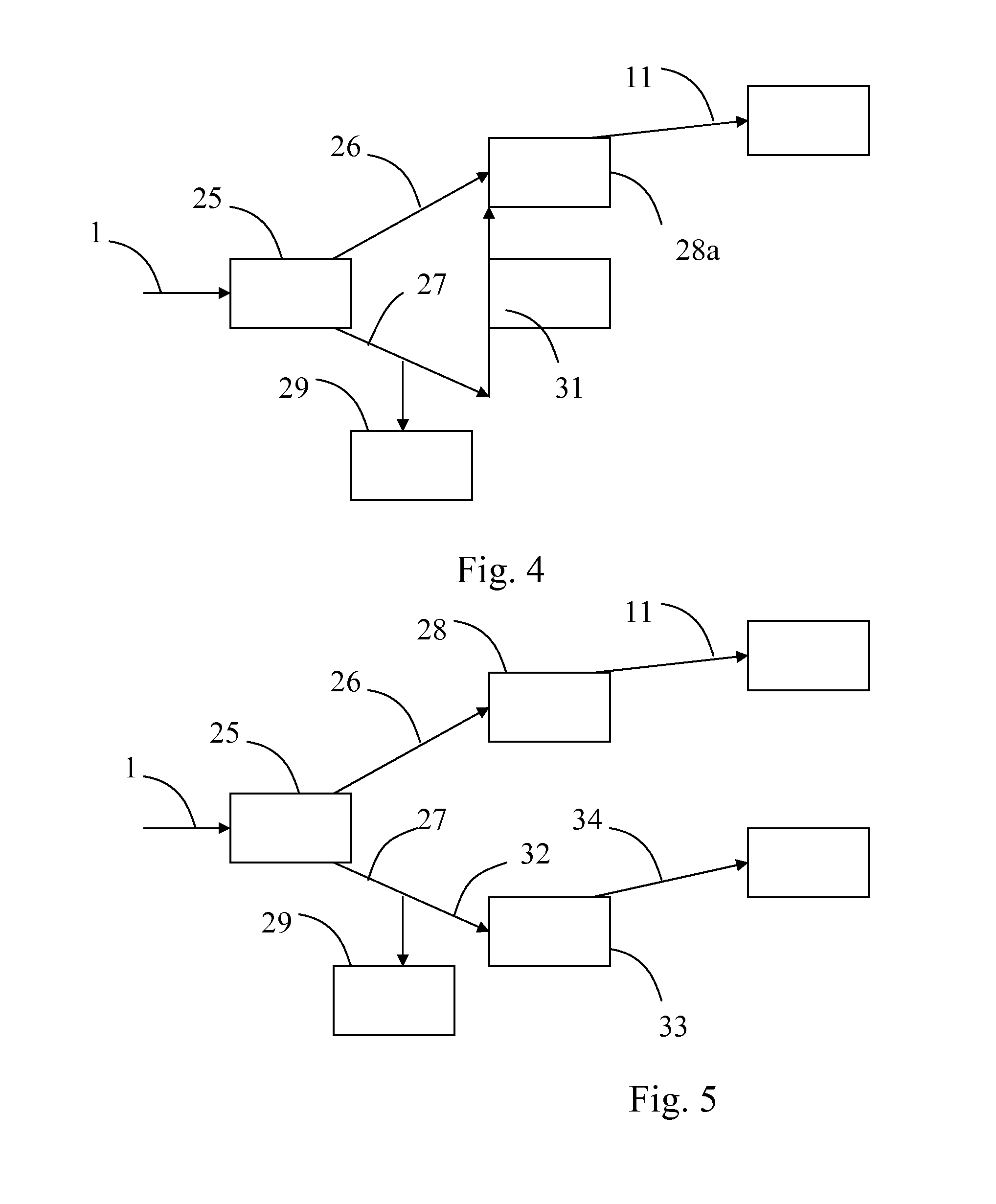Method for Steam Reforming Carbonaceous Material
- Summary
- Abstract
- Description
- Claims
- Application Information
AI Technical Summary
Benefits of technology
Problems solved by technology
Method used
Image
Examples
Embodiment Construction
[0045]FIG. 1 is a schematic diagram of a preferred embodiment of the single stream, one-stage process. The CM input 1 is continuously fed into an auger or screw conveyor 2, where it is shredded in a shredder 4. The CM may optionally be pre-treated by passing through a pre-heater or rotary drum dryer 6 before being fed into the steam reforming rotary kiln 9. This serves to do one or more of the following: remove excess moisture from the CM, generate steam, and warm up the shredded CM (to approximately 250° C.) in readiness for the steam reforming reaction. Where necessary, make-up water and / or steam 5 is added to the shredded CM. As previously mentioned, it is advantageous to provide for a continuous feed of high temperature steam to purge the CM entering the steam reforming kiln 9 of air, (in particular, of oxygen and nitrogen). The pre-heater 6 is provided with one or more flue gas vents 7 and one or more steam vents 8 for releasing excess steam. The CM is then fed into the steam r...
PUM
 Login to View More
Login to View More Abstract
Description
Claims
Application Information
 Login to View More
Login to View More - R&D
- Intellectual Property
- Life Sciences
- Materials
- Tech Scout
- Unparalleled Data Quality
- Higher Quality Content
- 60% Fewer Hallucinations
Browse by: Latest US Patents, China's latest patents, Technical Efficacy Thesaurus, Application Domain, Technology Topic, Popular Technical Reports.
© 2025 PatSnap. All rights reserved.Legal|Privacy policy|Modern Slavery Act Transparency Statement|Sitemap|About US| Contact US: help@patsnap.com



